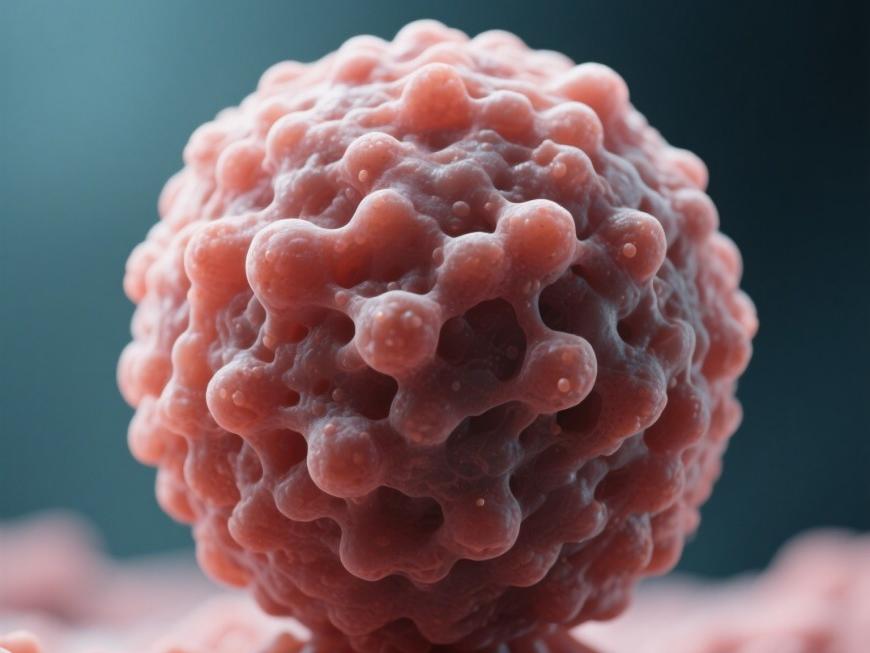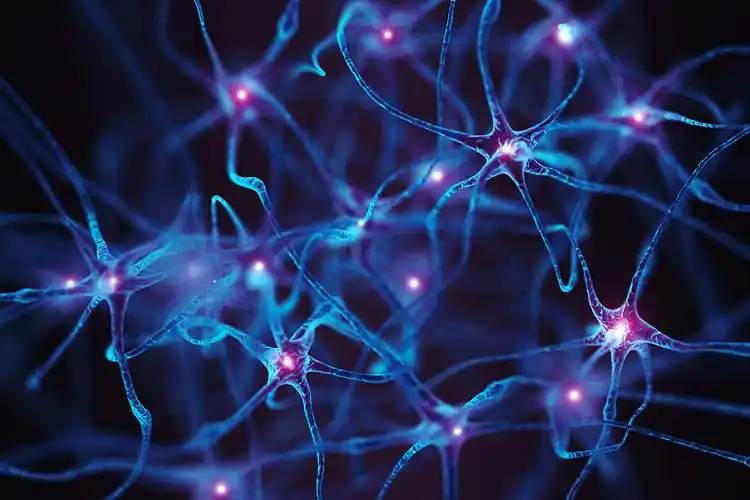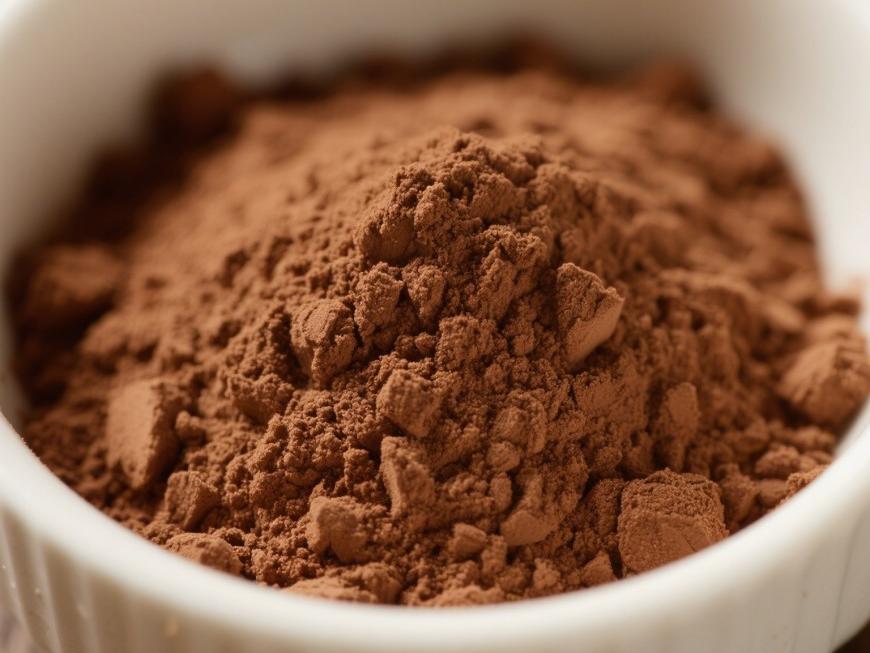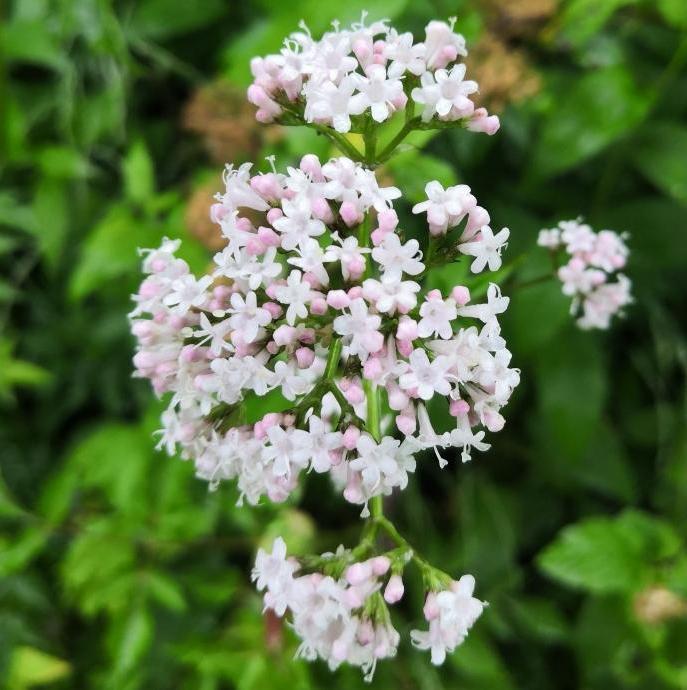Study on Valerian and Depression
Valerian (Valeriana officinalis L.) is a perennial herbaceous plant belonging to the Valerianaceae family and Valeriana genus. Valerian is primarily distributed in regions with mild temperatures and high humidity. It is associated with the heart and liver meridians, calms the mind, and has therapeutic effects for insomnia, depression, and anxiety [1].
1 Anticancer Effects
Modern pharmacological studies suggest that Valeriana may possess anticancer activity. Xue Cunkuan et al. [2] employed an in vivo mouse tumor transplantation experiment and an in vitro MTT assay using thiazole blue staining to investigate the antitumor activity of total cycloentran, cycloentran glycosides, and cycloentran esters in Valeriana. The results showed that the cycloartenol terpenoids in Valeriana officinalis exhibited significant cytotoxic effects against monocyte leukemia (U937) and cervical cancer (Hale), with a half-maximal inhibitory concentration (IC50) of 20–30 mg/L. In vivo experiments in mice demonstrated a marked antitumor effect, with an IC₅₀ of 46.38% to 68.71%. Zhang Shuqin et al. [3] reported that valerianolide can significantly prolong the survival time of Ehrlich ascites carcinoma (EAC) mice, with a prolongation rate ranging from 62% to 66%, comparable to 5-FU, and it can increase the formation of red blood cell clusters, indicating that it may have immune-enhancing effects.
Ye Jianmin et al. [4] found that Valeriana officinalis extract can induce apoptosis in MKN-45 gastric cancer cells, which is associated with caspase activation, achieved through the activation of the intrinsic apoptosis pathway, unrelated to the extrinsic apoptosis pathway, and exhibits concentration-dependent and time-dependent effects. Its mechanism of action is associated with the upregulation of P53 protein expression, enhancing the pro-apoptotic effect of Bax and inhibiting the expression of survivin and Bcl-2. However, the specific mechanism underlying the high expression of P53 protein and low expression of survivin requires further investigation.

Chen et al. [5] used the MTT assay, quantitative polymerase chain reaction (qPCR), and Western blot (WB) to investigate the effects of Valeriana officinalis on pancreatic cancer (PC) cells, and conducted a preliminary discussion on the underlying mechanisms. The results indicated that Valeriana officinalis significantly inhibited the growth of PC cells but did not affect the growth of normal pancreatic epithelial cells. The mechanism of action was associated with increasing Bax expression levels, inhibiting Bcl-2, c-Myc, and cell cycle protein B1, and suppressing Stat3 transcriptional activity. Valeriana officinalis induced apoptosis and cell cycle arrest, thereby exerting anticancer effects.
Lu et al. [6] used a xenograft mouse model to confirm that valerian acid inhibits the growth of glioblastoma multiforme (GBM) by enhancing intrinsic signaling, increasing ROS levels, and activating the AMPK pathway, thereby inducing GBM cell apoptosis. In summary, Valeriana officinalis exerts its antitumor effects by regulating factors or pathways such as P53, Bax, survivin, Bcl-2, c-Myc, B1, Stat3, ROS, and AMPK, which holds significant implications for the development of anticancer drugs in the future.
2. Improvement of sleep quality
Zhang Zhongli et al. [7] administered Valerian extract to D-galactose-induced and sleep-deprived Alzheimer's disease (SDAD) rats, and found that compared with the model group, the valerian alcohol extract defatted group, the 20% ethanol washed extract group, and the 70% ethanol washed extract group increased the levels of catalase (CAT) and total antioxidant capacity (T-AOC) in rat serum, decreased acetylcholinesterase (AChE) activity, and increased the activity of superoxide dismutase (SOD), glutathione peroxidase (GSH-Px), GSH-Px activity increased, and lipid peroxidation malondialdehyde (MDA) levels decreased (P < 0.05, P < 0.01). The results indicate that Valeriana extract can improve learning and memory ability, sleep quality, and antioxidant capacity in SDAD model rats. The mechanism may be related to enhancing T-AOC activity, reducing ACh E levels, and improving antioxidant capacity in SDAD rats. Ab-dellah [8] et al. reported that the combination of flower-shaped grass and valerian significantly increased sleep duration in insomniac adults, sleep efficiency from 78.4% ± 12.5% to 84.6% ± 10.2% (P = 0.002), and the number of awakenings and total duration decreased, but the sleep latency did not improve. This suggests that extracts of Polygonum cuspidatum and Valeriana may have a beneficial effect on sleep in adults with insomnia.
Sichardt et al. [9] compared the effects of methanol (M-E), ethanol (E-E), and ethyl acetate (EA-E) extracts on postsynaptic potentials (PSP) of cortical neurons at concentrations ranging from 0.1 to 15 mg/mL. M-E induced strong inhibition, while E-E (1–10 mg/mL) had no significant effect on PSP. The adenosine A1 receptor antagonist 1,3-dipropyl-8-cyclopentylxanthine (DPCPX, 0.1 μmol/L) completely antagonized the maximum inhibitory effect induced by M-E. In contrast to M-E, EA-E (10 mg/mL) increased PSP, GABA_A receptor antagonist picrotoxin (100 μmol/L) completely blocked PSP. Therefore, it was found that the mechanism of action is related to adenosine A1 receptors and GABA_A receptors, and the activation of these two receptors is mediated by different components in Valeriana extract, thereby exerting its sleep-inducing effect.
Tokunaga et al. [10] investigated the effects of valerian extract preparations (BIM) on the sleep-wake cycle in a rat sleep disorder model, comparing them with the valerian extract group. Both significantly shortened the sleep latency period but had no significant effect on the total duration of wakefulness, non-rapid eye movement (non-REM) sleep, and REM sleep. However, the specific mechanism of BIM's anti-insomnia effects remains unclear and requires further investigation. Sudati et al. [11] demonstrated that in brain homogenate, valerian exhibited concentration-dependent inhibitory effects on thiobarbituric acid-active substances induced by oxidants, significantly inhibited lipid peroxidation (LPO) in the cerebral cortex, and reduced deoxyribose degradation. and also significantly reduced the production of reactive oxygen species induced by quinolinic acid in cortical slices, indicating that valerian extract has a certain regulatory effect on LPO induced by different pro-oxidants, and may serve as an antioxidant to reduce insomnia associated with oxidative stress.

Zhang Jinpeng et al. [12] used reverse transcription PCR (RT-PCR) to detect changes in the levels of interleukin-1β (IL-1β) and tumor necrosis factor-α (TNF-α) in peripheral blood mononuclear cells induced by Valeriana. The results showed that Valeriana administration significantly increased the expression of IL-1β and TNF-α, with significant differences compared to the blank control group (P < 0.05), thereby improving sleep quality. The mechanism of action may be related to the increased levels of IL-1β and TNF-α in mice [13]. Valerian/cascade mixture significantly increased NREM and total sleep time in the pentobarbital-induced sleep model, reduced sleep latency and wakefulness time, and its sleep-promoting mechanism is due to upregulation of GABAAR [14].
Thus, valerian can improve insomnia by activating GABAA receptors and adenosine A1 receptors, enhancing antioxidant capacity, and influencing neurotransmitters in the brain.
3 Antidepressant and anxiolytic effects
Benke et al. [15] reported that the anxiolytic effect of valerian extract valerianic acid targets the β3 subunit of GABAA receptors. Experimental results showed that point mutations in the β2 or β3 subunits (N265M) of GABAA receptors significantly reduced drug response. In in vivo experiments, valerian acid and valerianol exhibited high-efficiency anxiolytic activity in the elevated plus maze test and light/dark choice test in wild-type mice. However, in β3 (N265M) point mutation mice, the anxiolytic activity of valerenic acid was absent. Therefore, the GABAA receptor containing the β3 subunit was identified as the target of valerenic acid's anxiolytic effects.
Neamati et al. [16] found that valerenol extracts could prevent depressive behavior in ovalbumin-sensitized rats, and oxidative stress plays a role in depression and anxiety [17], and oxidative stress was also increased in ovalbumin-sensitized animals [18]. Therefore, this study suggests that the antidepressant effects of valeren extracts may be related to oxidative stress responses, but the specific mechanisms require further investigation. Mojica et al. [19] used a light/dark preference test in zebrafish to demonstrate that valerian and valerenic acid exhibit anxiolytic activity in zebrafish, The anxiolytic effects disappeared after administration of LAP3 (mGluR I antagonist) and EGLU (mGluR II antagonist), suggesting that the mechanism may be related to metabotropic glutamate receptors (mGluR). Murphy et al. [20] employed the elevated plus maze test and behavioral tests, and found that valerenic acid is the primary anxiolytic component, and its anxiolytic effect is enhanced due to the presence of GABAB receptors.
Gonulalan et al. [21] reported that valerian extract (VO), valerenic acid (VA), acetoxy valerenic acid (AVA), valerenic acid-free (VAF), and acetoxy valerenic acid-free (AVAF) on the expression of brain-derived neurotrophic factor (BDNF) in SH-SY5Y cells, GABAA receptors are regulated by BDNF and modulate depressive behavior. The results showed that VO and VA extracts significantly increased BDNF expression in SH-SY5Y cells (P < 0.001). When cells were treated with VAF extract, this effect was completely abolished. AVA alone did not cause any significant changes in BDNF levels. The effect of the extracts on cells was concentration-dependent with increasing VA content. Therefore, Valerian extract can increase BDNF levels in SH-SY5Y cells.
Valerian extract can improve stress responses in mice induced by physical shock and psychological stress, reduce plasma corticosterone, serotonin (5-HT), and norepinephrine (NE) levels in the hippocampus and amygdala of mice, thereby alleviating the negative effects of stress on mice [22]. Farah et al. [23] conducted a randomized, crossover experiment, selected 20 anxious patients with bilateral extraction of the third molars in the mandible, assessed their physiological parameters, and found that valerian provided a comforting and relaxing effect, demonstrating anxiolytic effects, with fewer adverse reactions compared to midazolam. However, further clinical studies are needed for clinical application. The above studies indicate that valerian can improve depression and anxiety through mechanisms such as regulating GABA receptors and reducing oxidative stress.
4 Neuroprotective effects
As lifespan increases, a better understanding of the physiological and pathological mechanisms associated with brain aging can help prevent neurological diseases, thereby improving the quality of life in the elderly. Brito et al. [24] conducted in vitro experiments on C6 glioma cells in rats using the MTT method and found that valerian had a protective effect against rotenone-induced cytotoxicity. In vivo experiments investigated the interaction between valerian and rotenone in cortical spreading depolarization (CSD), showing that valerian had a certain inhibitory effect on the proliferation rate of CSD. The specific mechanism remains a subject of debate and requires further investigation.
Cornara et al. [25] investigated the biological effects of valerian on the nervous system using acetylcholinesterase (AChE) inhibitory activity and microelectrode array (MEA) analysis. The AChE results indicated that the IC50 of valerian was 127.30 μg/mL, MEA analysis was conducted by recording the mean firing rate (MFR) and mean burst rate (MBR), with results of 16.5 and 22.5 μg/mL, suggesting its potential therapeutic effects on neurological disorders. Sudati et al. [26] investigated the protective effects of Valeriana against the harmful effects of rotenone on black-bellied fruit flies. The results indicated that Valerian extract significantly reduced the toxic effects of rotenone on black-bellied fruit flies. After Valerian treatment, the content of total thiols, as well as the mRNA expression of SOD and CAT, were reduced. This confirmed the potential of this model in exploring treatments for neurodegenerative diseases; however, the specific neural pathways involved require further investigation.
A study established an MPTP-induced Parkinson's disease mouse model. Through muscle strength tests, balance beam tests, field activity ability tests, and hind limb weight-bearing tests, and ELISA detection of inflammatory cytokines IL-1β, IL-6, TNF-α, and IFN-γ, the results showed that valerian acid can regulate neuroinflammation in Parkinson's disease, reducing the levels of pro-inflammatory cytokines and GFAP in the midbrain region. The mechanism of action may involve inhibiting the activation of NF-κB and 5-HT5A receptors in astrocytes [27]. However, another study used a genomic approach to assess the potential mechanisms of Valeriana officinalis in treating PD. The results indicated that hesperidin and linoleic acid may reduce oxidative stress during ATP consumption by binding to SUR1, while valerenic acid and apigenin may play a key role in inducing the release of GABA from substantia nigra (SN) neurons in the brainstem, thereby preventing excessive cortical excitation [28].

Sharifzadeh et al. [29] induced morphine withdrawal syndrome in mice by injecting naloxone and found that animals treated with Valeriana officinalis water extracts and methanol extracts significantly reduced naloxone-induced jumping. The mechanism of action may involve interacting with inhibitory neurotransmitters in the nervous system to influence morphine withdrawal syndrome. A study involving healthy volunteers in a double-blind, randomized, crossover, placebo-controlled experiment found that a single oral dose of Valerian extract can influence human excitatory cortico-spinal pathways [30]. Fachi-netto et al. [31] administered Valerian to animals with oromotor dysfunction (OD) induced by long-term haloperidol administration, to assess empty chewing movements (VCMs), motor activity, maze performance, and oxidative stress parameters. The results indicated that valerian did not cause any oxidative damage to the central nervous system (CNS) and did not prevent VCMs.
Additionally, another study found that valerian had a preventive effect on VCMs induced by reserpine in rats, which significantly increased VCMs in rats. However, co-treatment with valerian reduced the intensity of VCMs. In the cerebral cortex, VCMs were significantly positively correlated with DCF-oxidized levels (P < 0.05), while Na+ K+ -ATPase was negatively correlated in the substantia nigra of the midbrain, indicating that valerian has a behavioral protective effect against reserpine-induced VCMs in rats. However, the exact mechanism remains to be further investigated [32]. Circosta et al. [33] reported that valerian alcohol extracts and water extracts protect guinea pig coronary artery spasm and blood pressure induced by pituitary vasopressin, with the mechanism possibly mediated by interfering with calcium overload capacity. In summary, Valerian has therapeutic potential for neurological disorders characterized by oxidative stress imbalance and astrocyte dysfunction, as well as degenerative neurological diseases.
5 Antiepileptic effects
Epilepsy is a currently incurable disease, and its recurrent episodes cause suffering and some sequelae in patients' lives. Therefore, finding clinically effective drugs with minimal side effects has become an urgent priority. Rezvani et al. [34] reported that Valeriana officinalis water extracts exhibit significant anticonvulsant effects in a temporal lobe epilepsy animal model, whereas petroleum ether extracts show no significant anticonvulsant effects. Selective adenosine A1 receptor antagonists can reduce the anticonvulsant effects of Valerian water extract, suggesting that Valerian's anticonvulsant effects may be mediated through the activation of the adenosine system.
Bianca et al. [35] induced seizures in adult zebrafish using pentylenetetrazole (PTZ) and found that ethanol valerian extract significantly enhanced the anticonvulsant effects of clonazepam and phenytoin, increased the seizure latency period, and improved survival rates, with a concentration-dependent increase in seizure latency. However, the specific mechanism of action remains unclear and requires further investigation. Additionally, studies have shown that valerian extract can improve PTZ-induced epileptic seizure behavior in rats, increase plasma SOD antioxidant enzyme activity, and correct the QT interval (QTc), which may serve as a predictive factor for recurrent epileptic seizures and epilepsy onset [36]. Therefore, valerian holds significant potential as an adjunctive therapeutic agent for anticonvulsant therapy.
6 Other
Research has reported for the first time that valerian may become a new direction for the future treatment of type 2 diabetes. By studying the effects of valerian extract on 3T3-L1 adipocytes, it was found that valerian can promote adipocyte differentiation, significantly increase the mRNA levels of peroxisome proliferator-activated receptor gamma (PPARγ), CCAAT-element-binding protein α, and adipocyte protein 2, and also significantly increase the mRNA and protein levels of adiponectin. Additionally, it was found that adipocyte differentiation and increased adiponectin levels are associated with PPARγ binding [37].
Occhiuto et al. [38] reported that Valeriana extract inhibits uterine contractions in a concentration-dependent manner and reduces the maximum contraction response induced by acetylcholine, norepinephrine, and histamine without requiring stimulation. The mechanism of action may be mediated by interfering with calcium overload. Studies have indicated that valerian has the strongest toxicity against red flour beetles (LD₅₀ = 10.0 μg/adult) and exhibits additive effects, suggesting that valerian can serve as a plant-based insecticide, providing reference for the development of insecticides [39]. Jenabi et al. [40] conducted a three-month clinical trial involving 60 postmenopausal women using a triple-blind, randomized, controlled design. The severity and frequency of hot flashes were assessed using the Kupperman index at different intervention periods. The results indicated that valerian alleviated the severity and frequency of hot flashes, thus being effective for hot flashes in postmenopausal women; however, the results remain non-generalizable.
Meanwhile, Nam et al. [41] found that Valerian root extract enhanced cognitive function in aged mice induced by d-galactose, promoted cell proliferation and neural progenitor cell differentiation, and reduced serum corticosterone and lipid peroxidation. Its mechanism of action may be related to the antioxidant function of valerian extract on the hippocampus and GABA. Dugaheh et al. [42] evaluated the antioxidant effects of valerian using the diphenylpyridine (DPPH) inhibition method and β-carotene bleaching method. Valerian exhibited strong inhibitory effects on DPPH, with an IC50 value of 38 mg/mL, indicating significant antioxidant activity. Liang Qun et al. [43] found that valerian terpenoids A, B, and C have inhibitory effects on liver fibrosis formation, with mechanisms potentially related to inhibiting hepatic stellate cell (HSC) proliferation and antioxidant activity. Additionally, Xing Jinmei [44] demonstrated that valerian terpenoid lactones A and C exhibit a dose-dependent inhibitory effect on HSC proliferation.
Xu Shali et al. [45] used an enzymatic method to detect total cholesterol (TC) and total bile acid (TBA) levels in rabbits fed a high-cholesterol, high-fat, and high-sugar diet. The results indicated that Valeriana extract increased TBA content in bile, improved TBA/TC ratio, reduced serum TBA concentration, and significantly alleviated liver damage. Valerian extract has certain preventive and therapeutic effects on bleomycin-induced alveolitis and pulmonary fibrosis in rats, and its mechanism may be related to downregulating the expression of transforming growth factor β1 (TGF-β1) [46,47]. Research has found that Valeriana officinalis may exert its pharmacological effects in treating irritable bowel syndrome (IBS) visceral hypersensitivity by acting on the parahippocampal gyrus and inhibiting gastrointestinal motility. This is achieved by increasing GABABR expression, enhancing its expression in the myenteric plexus of the colon, thereby strengthening the inhibitory effect on Ca²⁺ channels and reducing Ca²⁺ influx, inhibiting colonic contractions, alleviating IBS symptoms, and reducing gastrointestinal sensitivity by suppressing gastrointestinal smooth muscle movement [48-50].
7 Conclusion
Valerian, as a traditional herbal medicine with a long history, plays an important role in maintaining human health. Literature review reveals that valerian possesses various biological activities, with its effects in treating depression and anxiety becoming a research focus both domestically and internationally. Additionally, it exhibits antitumor activity, promotes sleep, protects the nervous system, and has antiepileptic effects, offering broad prospects for development. In recent years, domestic and international scholars have conducted increasingly in-depth studies on the pharmacological effects of Valeriana officinalis; however, its complex multi-target mechanisms remain unclear and require further exploration. According to literature reviews, current research on Valerian is primarily focused on functional validation, with clinical applications still in their early stages. Therefore, the authors recommend further investigations into the molecular regulatory mechanisms underlying Valerian's pharmacological effects, as well as its potential for broader clinical applications, to lay the groundwork for its more widespread use.
References
[1] National Administration of Traditional Chinese Medicine. Editorial Committee of the Chinese Materia Medica. Chinese Materia Medica [M]. Vol. 7. Shanghai: Shanghai Science and Technology Press, 1999: 576-580. [2] Xue Cunkuan, He Xuebin, Zhang Shuqin, et al. Experimental Study on the Antitumor Activity of Valerian Ringene Terpenoid [J]. Journal of Modern Chinese and Western Medicine, 2005, 14(15): 1969-1972.
[3] Zhang Shuqin, Xue Cunkuan, He Xuebin, et al. Anti-tumor effects of valerian ringene terpenoid ester on mouse transplanted tumors [J]. Chinese Journal of Hospital Pharmacy, 2010, 30(12): 1008-1010.
[4] Ye Jianming, Hu Pinjin, Yi Cuiqiong, et al. Valerian spring extract induces apoptosis in MKN-45 gastric cancer cells [J]. World Journal of Chinese Digestive Diseases, 2007, 15(1): 22-28.
[5] Chen LP ,Feng D,Qian YF,et al. Valtrate as a novel thera- peutic agent exhibits potent anti-pancreatic cancer activity by inhibiting Stat3 signaling[J]. Phytomedicine,2021,85: 153537.
[6] Lu QL,Ding Y,Li Y,et al. 5-HT receptor agonist Valerenic Acid enhances the innate immunity signal and suppresses glioblastoma cell growth and invasion [J]. Int J Biol Sci, 2020,16(12) :2104-2115.
[7] Zhang Zhongli, Zuo Yueming. Effects of Valeriana extract on learning, memory, and antioxidant capacity in a rat model of sleep disorders and Alzheimer's disease [J]. Chinese Journal of Gerontology, 2018, 38(16): 3976-3979.
[8] Abdellah SA,Berlin A,Blondeau C, et al. A combination of Eschscholtzia californica Cham. and Valeriana oficinalis L. extracts for adjustment insomnia:A prospective observa- tional study[J]. Tradit Complement Med, 2019, 10 (2) : 116-123.
[9] Sichardt K,Vissiennon Z,Koetter U,et al. Modulation of postsynaptic potentials in rat cortical neurons by valerian extracts macerated with different alcohols:involvement of a- denosine A1 -and GABAA -receptors [ J ]. Phytother Res, 2007,21(10) :932-937.
[10] Tokunaga S,Takeda Y,Niimoto T,et al. Effect of valerian extract preparation(BIM) on the sleep-wake cycle in rats [J]. Biol Pharm Bull,2007,30(2) :363-366.
[11] Sudati JH,Fachinetto R,Pereira RP ,et al. In vitro antioxi- dant activity of Valeriana oficinalis against different neu- rotoxic agents[J ]. Neurochem Res,2009,34 ( 8) : 1372- 1379.
[12] Zhang Jinpeng, Han Guangting, Gong Ying, et al. Effects of Valerian on IL-1β and TNF-α Gene Expression in Mouse Monocytes [J]. Journal of Liaoning University of Traditional Chinese Medicine, 2010, 12(11): 237-238.
[13] Zhang Jinpeng, Han Guangting, Zhang Jinfeng, et al. Effects of Valerian on the Expression of IL-1β and TNF-α Genes in Macrophages of Mice [J]. Journal of Liaoning University of Traditional Chinese Medicine, 2010, 12(9): 51-52.
[14] Choi HS,Hong KB,Han SH,et al. Valerian/Cascade mix- ture promotes sleep by increasing non-rapid eye movement (NREM ) in rodent model [ J ]. Biomed Pharmacother, 2018,99:913-920.
[15] Benke D,Barberis A,Kopp S,et al. GABAA receptors as in vivo substrate for the anxiolytic action of valerenic acid,a major constituent of valerian root extracts [J]. Neurop- harmacology,2009,56(1) :174-181.
[16] Neamati A,Chaman F,Hosseini M,et al. The effects of Valeriana oficinalis L. hydroalcoholic extract on depres- sion like behavior in ovalbumin sensitized rats [ J ]. J Pharm Bioallied Sci,2014,6(2) :97-103.
[17] Stefanescu C,Ciobica A. The relevance of oxidative stress status in first episode and recurrent depression[J]. J Af- fect Disord,2012,143:34-38.
[18] Jung JY,Lee KY,Lee MY,et al. Antioxidant and antiasth- matic effects of saucerneol D in a mouse model of airway inflammation[J ]. Int Immunopharmacol,2011, 11 ( 6 ) : 698-705.
[19] Del Valle-Mojica LM, Ortiz JG. Anxiolytic properties of Valeriana oficinalis in the zebrafish:a possible role for metabotropic glutamate receptors[J]. Planta Med,2012, 78(16) :1719-1724.
[20] Murphy K,Kubin ZJ,Shepherd JN,et al. Valeriana ofici- nalis root extracts have potent anxiolytic effects in labora- tory rats[J]. Phytomedicine,2010,17(8-9) :674-678.
[21] Gonulalan EM,Bayazeid O,Yalcin FN,et al. The roles of valerenic acid on BDNF expression in the SH-SY5Y cell [J]. Saudi Pharm J,2018,26(7) :960-964.
[22] Jung HY,Yoo DY,Kim W,et al. Valeriana oficinalis root extract suppresses physical stress by electric shock and psychological stress by nociceptive stimulation-evoked re- sponses by decreasing the ratio of monoamine neurotrans- mitters to their metabolites [J]. BMC Complement Altern Med,2014,14(1) :476.
[23] Farah GJ,Ferreira GZ,Dnieletto-Zanna CF,et al. Assess- ment of Valeriana oficinalis L. ( Valerian) for conscious sedation of patients during the extraction of impacted man- dibular third molars:A randomized, split-mouth,double- blind,crossover study[J]. J Oral Maxillofac Surg,2019, 77(9) :1796. e1-1796. e8.
[24] Amaral de Brito AP ,Galvao de Melo Imds,El-Bachá RS, et al. Valeriana oficinalis counteracts rotenone effects on spreading depression in the rat brain in vivo and protects against rotenone cytotoxicity toward rat glioma C6 cells in vitro[J]. Front Neurosci,2020,14:759.
[25] Cornara L,Ambu G,Trombetta D,et al. Comparative and functional screening of three species traditionally used as antidepressants: Valeriana oficinalis L. , Valeriana jata- mansi Jones ex Roxb. and Nardostachys jatamansi (D. Don)DC[J]. Plants(Basel) ,2020,9(8) :994.
[26] Sudati JH,Vieira FA,Pavin SS,et al. Valeriana oficinalis attenuates the rotenone-induced toxicity in Drosophila melanogaster [ J ]. Neurotoxicology, 2013, 37 ( 1 ) : 118- 126.
[27] Rodríguez-Cruz A,Romo-Mancillas A,Mendiola-Precoma J,et al. Effect of valerenic acid on neuroinflammation in a MPTP-induced mouse model of Parkinson ′ s disease″ [J]. IBRO Rep,2019,8:28-35.
[28] Santos G,Goraldez-Alvarez LD,Ávila-Rodriguez M,et al. SUR1 receptor interaction with hesperidin and linarin pre- dicts possible mechanisms of action of Valeriana oficinalis in parkinson[J]. Front Aging Neuro Sci,2016,8:97.
[29] Sharifzadeh M, Hadjlakhoondia A, Khanavi M, et al. Effects of aqueous,methanolic and chloroform extracts of rhizome and aerial parts of Valeriana oficinalis L. on nal- oxone-induced jumping in morphine-dependent mice[J]. Addict Biol,2006,11(2) :145-151.
[30] Mineo L,Concerto C,Patel D,et al. Valeriana oficinalis root extract modulates cortical excitatory circuits in hu- mans[J]. Neuropsychobiology,2017,75(1) :46-51.
[31] Fachinetto R,Villarinho JG,Wagner C,et al. Valeriana of- ficinalis does not alter the orofacial dyskinesia induced by haloperidol in rats: Role of dopamine transporter [ J ]. Prog Neuropsychopharmacol Biol Psychiatry, 2007, 31 (7) :1478-1486.
[32] Pereira RP ,Fachintto R,de Souza Prestes A,et al. Valeri- ana oficinalis ameliorates vacuous chewing movements in- duced by reserpine in rats[J]. Neural Transm( Vienna) , 2011,118(11) :1547-1557.
[33] Circosta C,De Pasquale RD,Samperi S,et al. Biological and analytical characterization of two extracts from Valeri- ana oficinalis[J]. Ethnopharmacol,2007,112(2) :361- 367.
[34] Rezvani ME,Roohbakhsh A,Allahtavakoli M,et al. Anti- convulsant effect of aqueous extract of Valeriana oficinalis in amygdala-kindled rats:Possible involvement of adeno- sine[J]. Ethnopharmacol, 2010,127(2) :313-318.
[35] Torres-Hernández BA, Del Valle-Mojica LM, Ortiz JG. Valerenic acid and Valeriana oficinalis extracts delay on- set of Pentylenetetrazole(PTZ)-Induced seizures in adult Danio rerio ( Zebrafish ) [ J ]. BMC Complement Altern Med,2015,15(1) :228.
[36] Kapucu A,Ustunova S,Akgun-Dar K. Valeriana oficinalis extract and 7-nitroindozole ameliorated seizure behav- iours, and 7-nitroindozole reduced blood pressure and ECG parameters in pentylenetetrazole-kindled rats [ J ]. Pol J Vet Sci,2020,23(3) :349-357.
[37] Harada K,Kato Y,Takahashi J,et al. The effect of metha- nolic Valeriana oficinalis root extract on adipocyte differ- entiation and adiponectin production in 3T3-L1 adipocytes [J]. Plant Foods Hum Nutr,2020,75(1) :103-109.
[38] Occhiuto F,Pino A,Palumbo DR,et al. Relaxing effects of Valeriana oficinalis extracts on isolated human non-preg-
[27] Rodríguez-Cruz A,Romo-Mancillas A,Mendiola-Precoma J,et al. Effect of valerenic acid on neuroinflammation in a MPTP-induced mouse model of Parkinson ′ s disease″ [J]. IBRO Rep,2019,8:28-35.
[28] Santos G,Goraldez-Alvarez LD,Ávila-Rodriguez M,et al. SUR1 receptor interaction with hesperidin and linarin pre- dicts possible mechanisms of action of Valeriana oficinalis in parkinson[J]. Front Aging Neuro Sci,2016,8:97.
[29] Sharifzadeh M, Hadjlakhoondia A, Khanavi M, et al. Effects of aqueous,methanolic and chloroform extracts of rhizome and aerial parts of Valeriana oficinalis L. on nal- oxone-induced jumping in morphine-dependent mice[J]. Addict Biol,2006,11(2) :145-151.
[30] Mineo L,Concerto C,Patel D,et al. Valeriana oficinalis root extract modulates cortical excitatory circuits in hu- mans[J]. Neuropsychobiology,2017,75(1) :46-51.
[31] Fachinetto R,Villarinho JG,Wagner C,et al. Valeriana of- ficinalis does not alter the orofacial dyskinesia induced by haloperidol in rats: Role of dopamine transporter [ J ]. Prog Neuropsychopharmacol Biol Psychiatry, 2007, 31 (7) :1478-1486.
[32] Pereira RP ,Fachintto R,de Souza Prestes A,et al. Valeri- ana oficinalis ameliorates vacuous chewing movements in- duced by reserpine in rats[J]. Neural Transm( Vienna) , 2011,118(11) :1547-1557.
[33] Circosta C,De Pasquale RD,Samperi S,et al. Biological and analytical characterization of two extracts from Valeri- ana oficinalis[J]. Ethnopharmacol,2007,112(2) :361- 367.
[34] Rezvani ME,Roohbakhsh A,Allahtavakoli M,et al. Anti- convulsant effect of aqueous extract of Valeriana oficinalis in amygdala-kindled rats:Possible involvement of adeno- sine[J]. Ethnopharmacol, 2010,127(2) :313-318.
[35] Torres-Hernández BA, Del Valle-Mojica LM, Ortiz JG. Valerenic acid and Valeriana oficinalis extracts delay on- set of Pentylenetetrazole(PTZ)-Induced seizures in adult Danio rerio ( Zebrafish ) [ J ]. BMC Complement Altern Med,2015,15(1) :228.
[36] Kapucu A,Ustunova S,Akgun-Dar K. Valeriana oficinalis extract and 7-nitroindozole ameliorated seizure behav- iours, and 7-nitroindozole reduced blood pressure and ECG parameters in pentylenetetrazole-kindled rats [ J ]. Pol J Vet Sci,2020,23(3) :349-357.
[37] Harada K,Kato Y,Takahashi J,et al. The effect of metha- nolic Valeriana oficinalis root extract on adipocyte differ- entiation and adiponectin production in 3T3-L1 adipocytes [J]. Plant Foods Hum Nutr,2020,75(1) :103-109.
[38] Occhiuto F,Pino A,Palumbo DR,et al. Relaxing effects of Valeriana oficinalis extracts on isolated human non-preg-nant uterine muscle [ J ]. J Pharm Pharmacol,2009,61
(2) :251-256.
[39] Feng YX,Wang Y,Geng ZF,et al. Contact toxicity and re- pellent efficacy of Valerianaceae spp. to three stored-prod- uct insects and synergistic interactions between two major compounds camphene and bornyl acetate [J]. Ecotoxicol Environ Saf,2020,190:110106.
[40] Jenabi E,Shobeiri F,Hazavehei SMM,et al. The effect of Valerian on the severity and frequency of hot flashes:A triple-blind randomized clinical trial[J]. Women Health, 2018,58(3) :297-304.
[41] Nam SM,Choi JH,Yoo DY,et al. Valeriana oficinalis ex- tract and its main component,valerenic acid, ameliorate D-galactose-induced reductions in memory,cell prolifera- tion ,and neuroblast differentiation by reducing corticoster- one levels and lipid peroxidation[J]. Exp Gerontol,2013, 48(11) :1369-1377.
[42] Dugaheh MA,Meisami F,Torabian Z,et al. Antioxidant effect and study of bioactive components of Valeriana si- symbriifolia and Nardostachys jatamansii in comparison to Valeriana oficinalis[J]. Pak J Pharm Sci,2013,26( 1) : 53-58.
[43] Liang Qun, Xing Jinmei, He Xuebin. Effects of Valerian Terpenoid on In Vitro-Induced Proliferation and Oxidative Stress Responses of Hepatic Stellate Cells [J]. Chinese Traditional and Herbal Drugs, 2019, 41(5): 1168-1171.
[44] Xing Jinmei. Effects of Valerianae Lignans on Proliferation and Expression of Type I Collagen and TGFβ1 in Hepatic Stellate Cells [D]. Wuhan: Huazhong University of Science and Technology, 2013.
[45] Xu Shali, Li Zhongming, Li Hani, et al. Experimental Study on the Effects of Valeriana Extract on Bile Acid Metabolism and Liver Injury [J]. Pharmaceutical Guide, 2011, 30(3): 298-301.
[46] Zeng Yulan, Yang Rongshi, Chen Sumei, et al. Effects of Valerian Extract on Bleomycin-Induced Pulmonary Fibrosis in Rats [J]. Chinese Journal of Hospital Pharmacy, 2009, 29(22): 1920-1923.
[47] Chen Sumei, Yang Rongshi, Zeng Yulan, et al. The intervention effect of Valeriana extract on experimental pulmonary fibrosis in rats [J]. Pharmaceutical Guide, 2008, 27(11): 1295-1297.
[48] Zhou Xiaodiao, Wang Xiaozhen, Ran Maoxi, et al. Effects of Valerian extract on GABA-B receptor expression in the hippocampal parahippocampal region of non-inflammatory colon-sensitized rat models [J]. Chinese Journal of Digestive Diseases and Imaging (Electronic Edition), 2017, 7(1): 13-16.
[49] Ye Jianming, Wang Yu, Wang Xiaozhen, et al. Effects of Valeriana officinalis on a non-inflammatory colonic sensitization model in rats [J]. World Journal of Chinese Digestive Diseases, 2009, 17(25): 2616-2620.
[50] Wang Yangzhongzi, He Xuebin, Xue Cunkuan, et al. Effects of Valeriana officinalis on GABAB R expression in the colon of rats with irritable bowel syndrome [J]. Chinese Journal of Gerontology, 2009, 29(4): 437-439.


 English
English French
French Spanish
Spanish Russian
Russian Korean
Korean Japanese
Japanese





